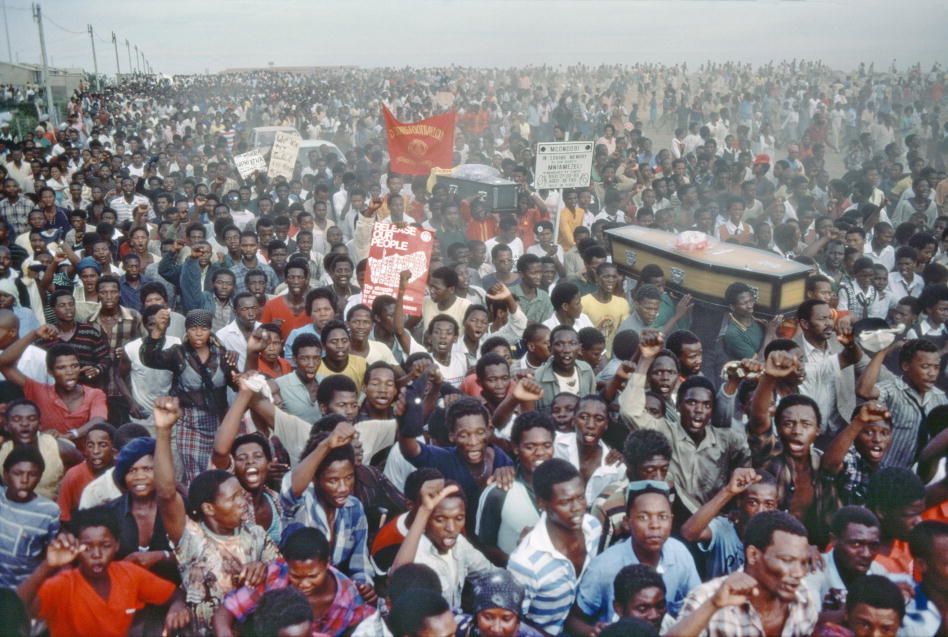Frederik Willem de Klerk, the last president of the Apartheid regime in South Africa, died on Thursday in Cape Town. He was president from 1989 to 1994. De Klerk presided over a monstrous counter-revolutionary regime that did everything possible to secure the interests of the ruling class against the revolutionary flood tide washing over the country in the 1990s. He was an unrepentant and committed Apartheid ideologue who defended the regime even after it was overthrown.
Following de Klerk’s death, a flurry of articles and statements has appeared in the bourgeois media painting a picture of De Klerk as a man who sought to right the wrongs of the Apartheid regime, highlighting how he was awarded the Nobel peace prize jointly with Nelson Mandela, how he fought against the hardline faction of the Apartheid regime and how he has issued a posthumous apology for the crimes of that system. Leaders of the ANC, such as Thabo Mbeki, and Cyril Ramaphosa have issued statements of grief and Nelson Mandela’s own foundation has issued a statement that De Klerk would “forever be linked to Nelson Mandela in the annals of South African history”.
These scandalous statements are nothing but the whitewashing of a criminal who, right until his death, played down the murderous nature of the regime and who, in a statement before the Truth and Reconciliation Commission, disputed the claim that it committed a “crime against humanity”. He repeated this idea more than two decades after the overthrow of the regime. He clung to the idea that Apartheid was necessary in light of the “complexity of South African diversity”, a view he shared with HF Verwoerd, the so-called ‘architect’ of Apartheid.
The reasons behind the reforms over which de Klerk presided had nothing to do with his non-existent progressive credentials. The fact that he entered into a negotiated settlement with the ANC was dictated by the fear that the mass movement of the South African workers and poor could sweep away the entire regime and threaten the foundations of capitalism itself.
A faithful servant of counter-revolution
Frederik Willem de Klerk was born in Johannesburg on 18 March, 1936 to a prominent conservative Afrikaner family with deep roots in Afrikaner nationalism. His father, Jan de Klerk became a cabinet member under three prime ministers and was president of the Senate.
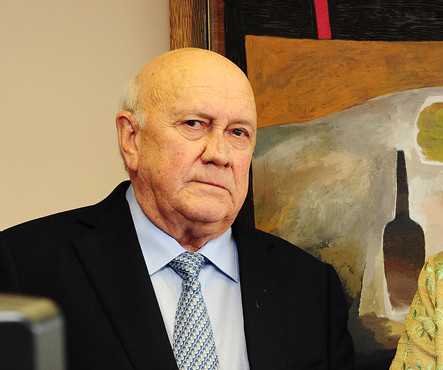 Coming from the hardline conservative wing of the National Party, De Klerk was active in Afrikaner nationalist organisations from an early age / Image: GovernmentZA, Flickr
Coming from the hardline conservative wing of the National Party, De Klerk was active in Afrikaner nationalist organisations from an early age / Image: GovernmentZA, Flickr
His uncle, JG Strijdom, a fervent advocate of Apartheid, was the second-ever prime minister of the Apartheid regime. His grandfather, also named Willem, was a proud Afrikaner nationalist, having been arrested on treason charges by the British before becoming a minister and a founding member of the National Party. The National Party came to power in 1948 brandishing its policy of strict racial segregation.
Coming from the hardline conservative wing of the National Party, De Klerk was active in Afrikaner nationalist organisations from an early age. He joined the Apartheid parliament in the early 1970s as an MP for the conservative town of Vereeniging near Johannesburg. During his time as an MP and later as a member of cabinet, De Klerk proved his commitment to the system of Apartheid. He held numerous ministerial posts, which presided over the oppression of the black population. The most prominent was that of the minister of education, in the capacity of which he was responsible for continuing the policy of ‘Bantu education’: an enforced system of racial hierarchy in education which severely limited opportunities for black people.
Hands dripping with blood
De Klerk was involved in the machinery of violence against black people in South Africa and countless black lives were snuffed out while he sat on the State Security Council which oversaw the massacres and assassinations carried out by state agencies and death squads. In the bourgeois media De Klerk is portrayed as a leader who had the foresight to end Apartheid by negotiation rather than violence. Nothing could be further from the truth. His action to negotiate was imposed on him by the revolutionary mass mobilisations of the black working class, which had posed a serious threat to the capitalist system he was protecting.
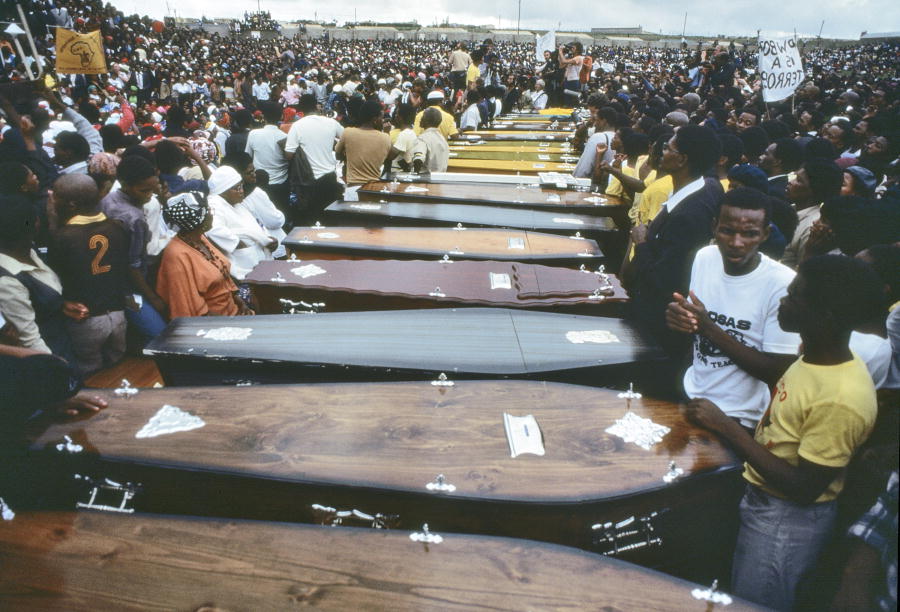 Between 1990 and 1993, up to 14,000 people were killed in massacres sanctioned by the state / Image: United Nations Photo, Flickr
Between 1990 and 1993, up to 14,000 people were killed in massacres sanctioned by the state / Image: United Nations Photo, Flickr
At the same time as he entered into negotiations with the ANC, he unleashed a wave of counter-revolutionary state sponsored violence against the working class and its organisations. During his presidency, political repression escalated to new highs. Between 1990 and 1993, up to 14,000 people were killed in massacres sanctioned by the state, according to a report by the Human Rights Commission.
In fact, the negotiations with the liberation movements were suspended in June 1992 for more than a year after a massacre in the township of Boipatong, in which 45 people died. This attack was carried out by members of the Inkatha Freedom Party, a reactionary Zulu nationalist group that was sponsored and armed by De Klerk’s security forces. After this massacre, the forces of revolution and counter-revolution engaged in a bitter struggle for more than a year until Nelson Mandela and the ANC agreed to restart the negotiations.
Revolution and counter-revolution
In the media, De Klerk is remembered for his famous speech of 2 February 1990 in which he announced the release of Nelson Mandela from prison and for unbanning of the ANC and other liberation movements. The real events that forced the Apartheid regime to release Mandela and enter into talks with the ANC were the dramatic mass movements of the black proletariat, which took speed in the mid-1980s. The emergence of an organised, revolutionary working class shocked the regime to its very foundations. The movement of the working class, with its waves of strikes, demonstrations and programme of ‘rolling mass actions’ continued to grow right up to 1994. And behind it, the working class drew the revolutionary masses and all the oppressed layers of society. For the working class this was not a solely democratic movement, but a movement towards socialism.
In this process, there were several occasions where the mobilisations would reach such a critical point that it threatened the foundations of capitalism in South Africa.
P. W. Botha was forced out of office in August 1989 and was succeeded by De Klerk as president. In the heated power struggle within the regime, De Klerk had to invoke the authority of his background to win over the majority of the party to his reform agenda. But more importantly, in the 1980s, the weight of petty-bourgeois Afrikaner nationalism had diminished in favour of big business, which realised that Apartheid will have to be abolished eventually in order to save the foundations of capitalism as a whole. This shift now favoured the reformist wing of the regime over the hardliners.
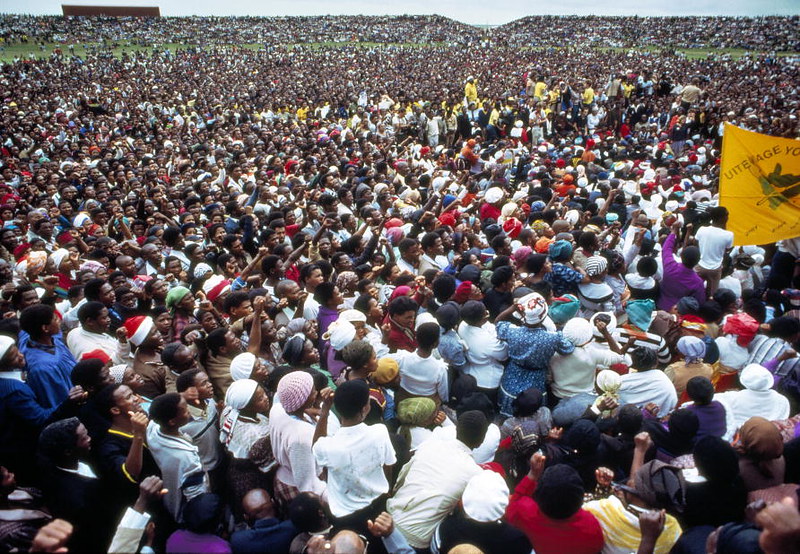 The real events that forced the Apartheid regime to release Mandela and enter into talks with the ANC were the dramatic mass movements of the black proletariat, which took speed in the mid-1980s / Image: United Nations Photo, Flickr
The real events that forced the Apartheid regime to release Mandela and enter into talks with the ANC were the dramatic mass movements of the black proletariat, which took speed in the mid-1980s / Image: United Nations Photo, Flickr
US imperialism came to similar conclusions in the mid-1980s. Seeing that the revolutionary masses had the potential to threaten the system as a whole, US imperialism betrayed the more hardline ruling faction of Botha in favour of the ‘reformist’ wing under De Klerk. The stubbornness of Botha against completing negotiations with the liberation movements is what led to US imperialists to impose some sanctions on the Apartheid regime, in order to put pressure on it to complete the reform agenda and prevent it from being overthrown in a revolution.
The insurrectionary movement of the 1984-86 had a profound effect on the whole country. This movement, which started as a civic protest in early 1984 against a raise in tariffs in the old Transvaal province, soon snowballed into a mass movement against the regime itself. The movement received the necessary backbone with the entrance of a more organised working class movement onto the scene. By the end of 1985, this gave birth to the formation of the Congress of South African Trade Unions.
The flames of revolution were rolling across the country. The ruling class was brought face-to-face with a dire threat to their system in the form of a mass revolution by the black working class. It revealed that the regime stands at risk of being forcefully overthrown and forced the ruling class to consider different measures other than brutal state repression to try to contain the black working class and avert revolution. So serious was the situation for the government that Botha unsuccessfully offered the conditional release from prison of Nelson Mandela as early as January 1985, on the condition that he renounce “violence” and “violent protests”. Of course, what he meant was to stop the government from being overthrown in revolution.
The regime imposed the first state of emergency on 25 July 1985. The ferocity of the state’s reaction under the state of emergency was an indication of the seriousness with which they regarded the situation. But the emergency measures by themselves had solved nothing. It could not put out the fire of discontent underneath the surface. It could not reverse the objective process that capitalist development had set in motion. Capitalism created its gravediggers in the form of the South African working class. The more intelligent section of the ruling class realised that, if they did not grant reforms and open negotiations with the leaders of the ANC and other liberation movements, their whole system was at risk. The longer the state of emergency remained in force, the more its impotence became evident. It failed to keep the lid of discontent on the black working class. It ensured the thorough discrediting of and collapse of Botha’s programme. A sense of paralysis gripped the government, preparing the conditions for Botha’s removal from office and his replacement by De Klerk.
The workers organise
The most important development for the working class was the formation of a labour federation that united the many unions under one umbrella organisation. The Congress of South African Trade Unions (Cosatu) was launched on 1 December 1985 at the height of the struggle of against Apartheid. As a federation it brought together many of the unions formed after the wave of strikes at the beginning of 1973, which marked a renewal of the trade union activity after a lull of more than a decade.
The mobilisation of the workers and the oppressed was so intense that it split the ruling class into two camps. The first camp was that of the hardliners around Botha. This camp, based mostly on the armed services, despite beginning negotiations with the national liberation movement, could not go any further. The second camp was that of the reformers around F.W. de Klerk. This camp clearly saw that the game was up and that the only way to safeguard the privileges of the elite was through negotiations. They were seeking a way of appeasing the masses by removing the Apartheid regime without removing the capitalist system that it was based on.
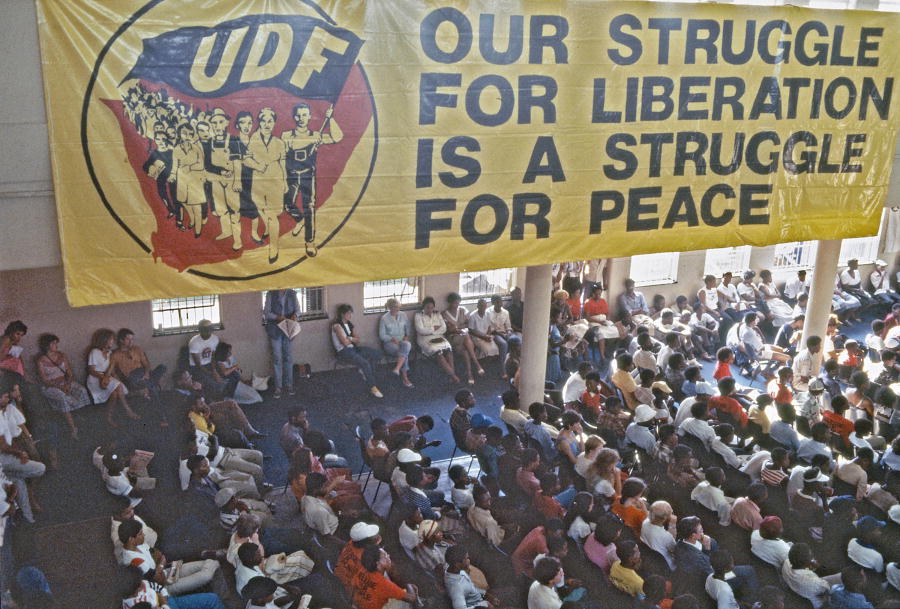 The response to a National Defiance Campaign called by the Mass Democratic Movement, Cosatu and the United Democratic Front on 26 July 1989 was overwhelming throughout the country / Image: United Nations Photo, Flickr
The response to a National Defiance Campaign called by the Mass Democratic Movement, Cosatu and the United Democratic Front on 26 July 1989 was overwhelming throughout the country / Image: United Nations Photo, Flickr
The impact of the launch of Cosatu was felt by the regime almost immediately. The workers embarked on what would later be called ‘rolling mass action’. Strikes took place in many sectors, including manufacturing and service sectors. Workers flocked to join Cosatu, and the federation’s membership surged in the few months after its launch. 1 May 1986 marked the 100th anniversary of International Labour Day, commonly referred to as May Day. The newly formed Cosatu now demanded that May Day be recognised as a public holiday, and called for a general strike. On May Day 1986, more than 1.5-million workers observed the call and crippled Johannesburg, joined by many thousands that included school pupils, students, taxi drivers, hawkers, shopkeepers, domestic workers, self-employed and unemployed people. Rallies were held in all the major cities, even though many of these were banned in advance by the state. By their actions the majority of the workers had unilaterally declared May Day a public holiday. The working class was flexing its muscles and showed the limitations of the apparently fearsome Apartheid state.
The general unrest and the strike waves were so intense that the regime, out of desperation, declared a second state of emergency and launched a vicious campaign of detentions and crackdowns. The regime even deployed the military to barricade Cosatu’s headquarters in Johannesburg and monitored movements in and out of the building. But the workers also retaliated. Tens of thousands went on strike to protest against the detentions.
On 26 July 1989 the Mass Democratic Movement, Cosatu and the United Democratic Front called for a National Defiance Campaign. The response was overwhelming throughout the country. White facilities were invaded, and banned organisations declared themselves ‘unbanned’, initiating a period of open and mass defiance of Apartheid laws. Again, the apparently fearsome regime was powerless to prevent this. In mid-September, mass marches took place in Cape Town, Johannesburg and Pretoria, with marchers openly flying the ANC flag, which was until then still a banned organisation. In smaller cities, such as Uitenhage in the Eastern Cape, a huge march seemed to dwarf those of the larger centres. This revolutionary mass movement struck terror in the very heart of the regime. Seeing that the game was up, the government of F.W. de Klerk now decided to commit itself fully to negotiations and by October all political prisoners were released. Nelson Mandela was released on 11 February 1990 as a result of the revolutionary movement of the working class.
On 10 April 1993, Chris Hani, a popular leading member of the South African Communist Party was assassinated by an anti-communist Polish immigrant with the help of a far-right nationalist. For more than 10 days the mass movement that resulted from this suspended the regime in mid-air. This movement had the potential to sweep away the entire regime had the ANC leadership pointed that way. Instead, Nelson Mandela, appearing on television and in the media, called for calm. He used all his authority to hold back the movement and restarted the negotiations with the regime. The truth is that, had there been a real Bolshevik leadership at the head of the movement at this stage, the masses could have taken power. The result of those negotiations was that the economic wealth remained untouched, while state power was in the hands of the ANC elites.
Bury the capitalist system!
The true protagonists in the fight to overthrow the Apartheid regime were the heroic masses of working people. The overthrow of the Apartheid regime was not due to the negotiating skills of the leadership of the liberation movement, the sacrifices of De Klerk, the so-called ‘armed struggle’ by the ANC, or the sanctions that were imposed by the imperialists. Apartheid was overthrown by the actions of the revolutionary masses in struggle. Every single democratic demand - the right to strike, freedom of assembly, freedom of speech, and the right to vote, etc. - was won by the struggles of the proletarian masses. The fact that the revolution did not go all the way was ultimately due to the lack of a revolutionary leadership.
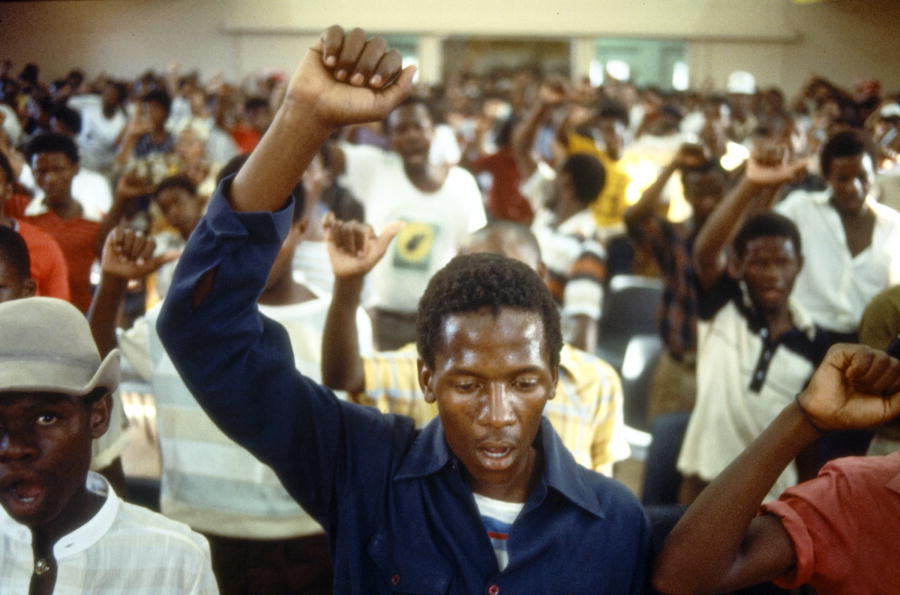 The true protagonists in the fight to overthrow the Apartheid regime were the heroic masses of working people / Image: United Nations Photo, Flickr
The true protagonists in the fight to overthrow the Apartheid regime were the heroic masses of working people / Image: United Nations Photo, Flickr
Today, South African capitalism staggers on at appalling cost to the working class only because it has not been overthrown. To free itself from exploitation and solve the problems facing mankind, the working class has to take the productive forces of the country into common ownership and, linking up internationally, organise a planned economy, under workers’ democratic control and management. In this way, all the vast resources of the earth, all the modern techniques created by science and labour, can be put to use—not for the private profit of a few, but to meet the needs of all. In the end, F.W. de Klerk died a free man, peacefully in his sleep, having never been held accountable for the atrocities he committed against the South African people. This is a scandal, which must be placed at the feet of the ANC government.
De Klerk, a creature of capitalist exploitation, is dead. We need to bury him together with the system which has spawned him.

